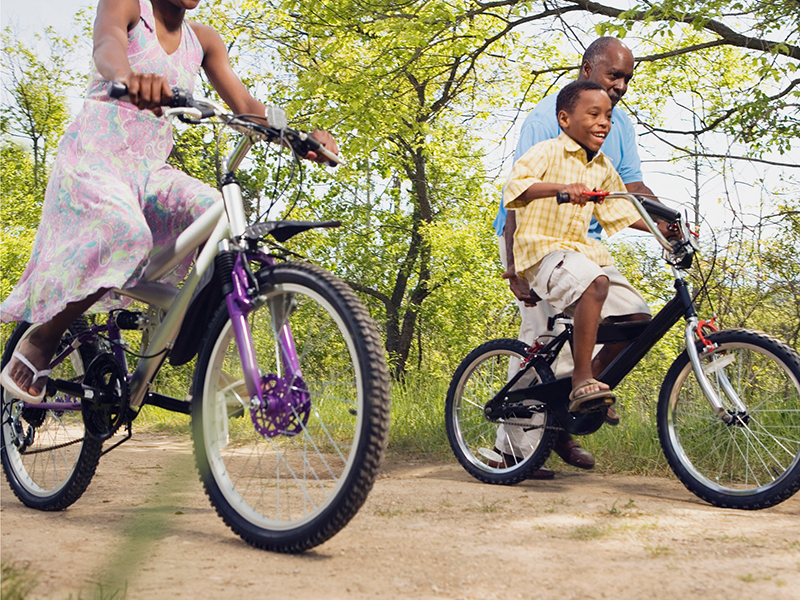The family that bikes together, gets healthy together. But biking with children can be challenging, especially when you’re navigating a crowded bike path or dealing with mid-trip meltdowns.
The physical and mental benefits of biking, though, are worth it. And once you are safely on the trail, all these worries slip away. To make the most of your next family biking adventure, keep these tips in mind before you head out on the road.
Get Kids Into Bicycling Early
Kids are naturally drawn to bikes. You don’t even need to wait until they can pedal to share your enthusiasm for biking with them. Connect a child bike seat or a bike trailer to your own bike, and take your child with you whenever you ride.
When your child is old enough to sit on a bike seat, try using a trailer bike. This half-bike is attached to the back of your own, but lets your child pedal and hold onto their own handlebars. But don’t expect much help climbing the big hills.
Around age 5—although it can range from 3 to 8 years—kids can learn to ride a bike on their own. Look for a good smooth surface for them to practice on, the fewer obstacles the better. Pavement is good, but short grass is also a great option.
Choose a Bike for Your Child
An ill-fitting bike can turn your child off from bicycling. Even worse, a bike that is too big or small will be harder to control. This may increase the risk of your child having an accident.
Research several bikes before buying. And as tempting as it is to buy online, you’ll do better if your child can try out the bike first. Look for a bike shop or store that has a wide selection of children’s bikes and staff trained to help you find the right size bike.
In general, your child should be able to touch his or her toes to the ground when sitting on the bike seat. If the feet are flat on the ground, though, consider buying the next size up. Your child should also be able to easily hold the handlebars and use the breaks.
Make Every Ride a Safe Ride
The most important piece of safety equipment for biking is a helmet. Get your child in the habit early of wearing a bike helmet on every ride. Your local bike shop can show you how to properly adjust a child’s bike helmet.
Have your child’s bike tuned every year and frequently check for signs of damage or loose parts, especially the brakes and handlebars. To improve visibility when riding in the evening or at night, the bike should be equipped with reflectors and lights.
Children should also learn how to ride safely. This includes knowing the rules of the road, such as using arm signals, making turns safely and riding with the flow of traffic. You should also lead by example. This means wearing your own bike helmet, even if it’s just for a short ride to the corner store.
Minimize the Meltdowns
Children love biking, but they may tire a lot sooner than you do. To catch meltdowns before they happen, tune into your child’s cues. Keep an eye out for them falling behind, complaining or overheating. It may be time for a break.
But even if they appear to have a lot of energy, check in with them frequently. Ask how much further they want to ride, or if they want more or less of a challenge. Be ready to adjust your itinerary, if needed. And stay positive. Praise their new-found bike skills.

